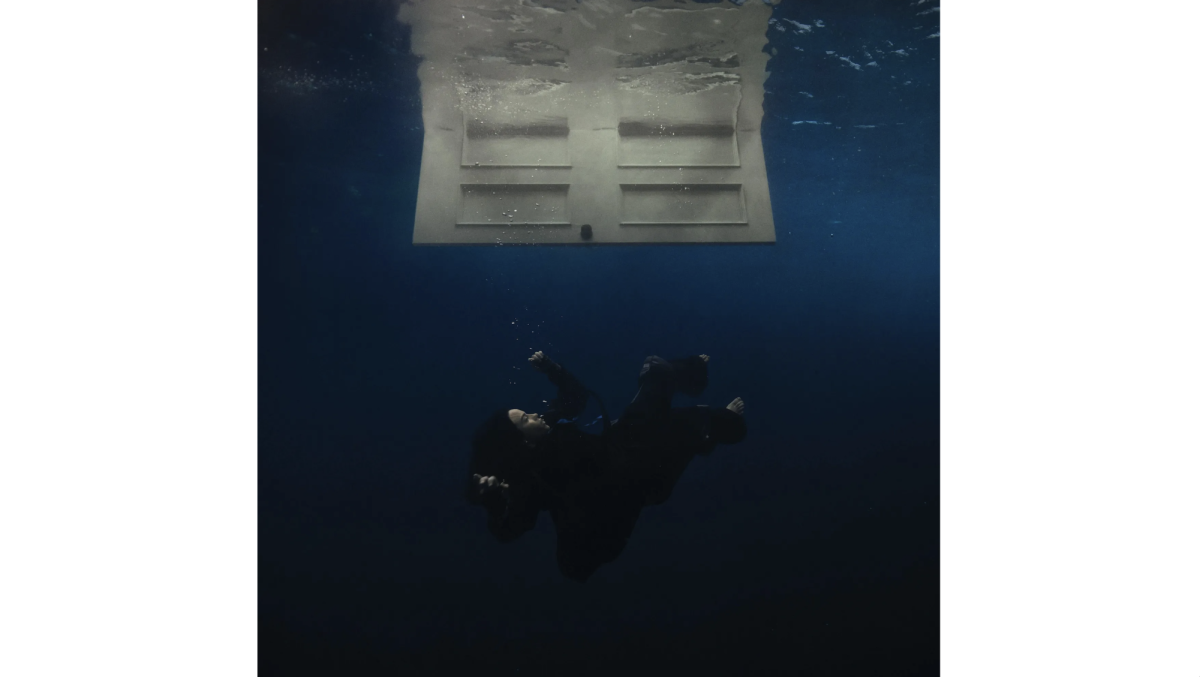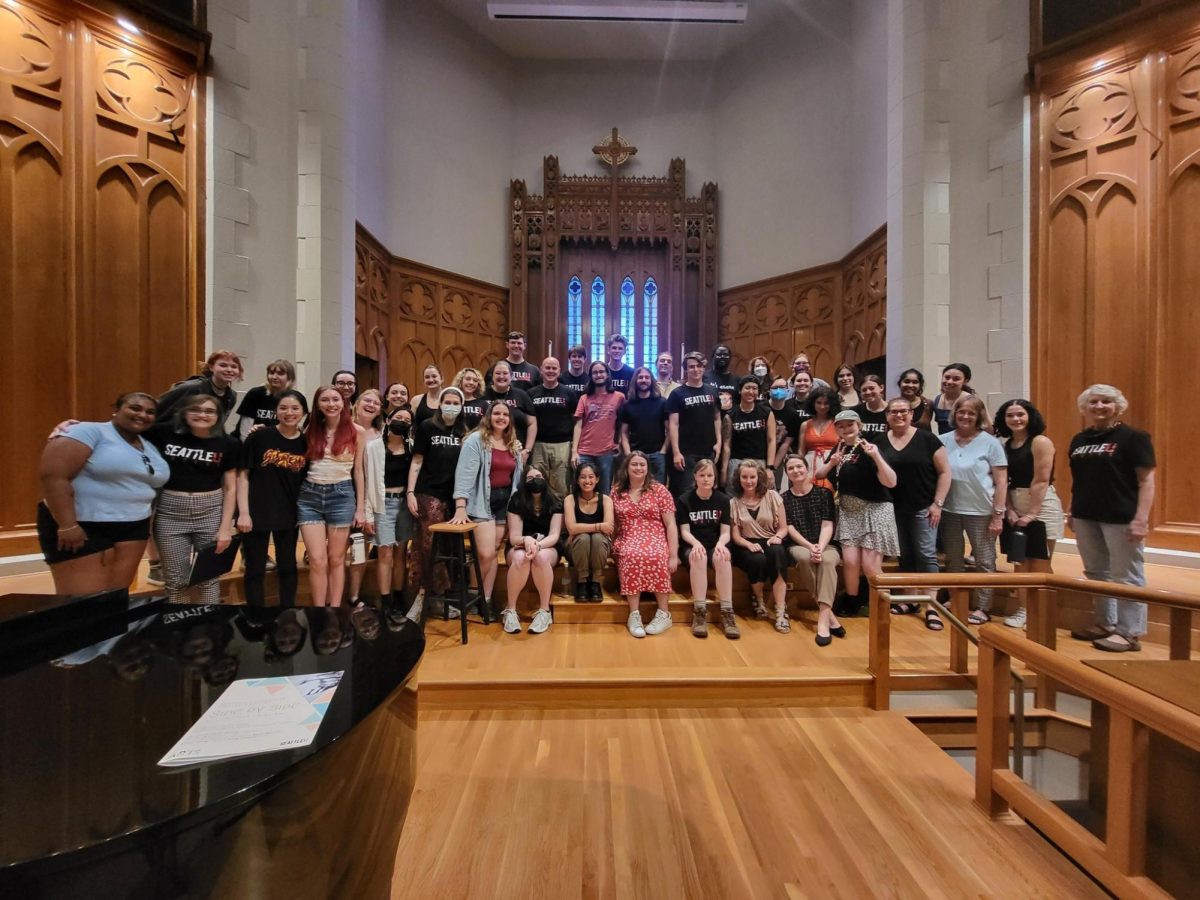Fruit peels, bent pins and broken porcelain vessels dangled from the walls of the 4Culture gallery in Pioneer Square on Thursday, Nov. 2. This assortment of objects was a part of an installation called “Production Valued,” which is the brainchild of Satpreet Kahlon, a Seattle-based artist from Punjab, India.
Draping from wooden scaffolding, a scarf-like spool created from deconstructed t-shirts encircled the gallery. Elements of film, which featured the artist, her mother and her grandmother, neighbored the colorful loop of fabric. FaceTime clips of the artist and her relatives were included, as well as clips of the artist and her mother performing various forms of labor, such as mopping and sewing.
“Production Valued” examined Kahlon’s position as a laborer and an artist working within the limiting conditions of a capitalist institution. The project grappled with the idea of both rejecting and operating within the institution simultaneously.
Logan Franken, Kahlon’s partner, said that the purpose of Kahlon’s multimedia installation was to expose labor practices that are often hidden. For example, in “Production Valued,” Kahlon disclosed the underground labor that contributed to her own artistic endeavor. The laborers, many of whom are fellow students at the Rhode Island School of Design, were honored with photographs of their hands alongside meaningful captions. Hands, as suggested by Kahlon, are the essence of labor production and assigned value.
As indicated in “Production Valued,” the t-shirt also serves as a symbol of labor and value.
“Exposure through detail is radical,” Franken said when discussing the analogous relationship between the labor production and a t-shirt’s subtlety and complexity.
Additionally, Franken touched on the accessibility of Kahlon’s installation. Upon entrance to the gallery, the artist provided handouts which described the physical and conceptual components of her piece.
Andrew Brown, a friend of the artist, shared that the best way to interpret or create meaning from art is to literally describe what is happening. Brown examined “Contending with the Insufficiency of Memorial,” a segment of “Production Valued” which is comprised of translucent fabric suspended from a jumbled display of wooden scaffolding, a mass of blue threads and countless sewing needles.
“This is tangled,” Brown said, pointing to the knotted blue thread hanging from the wooden structure. “Everything’s odd, and then there is a recognizable image.”
The “recognizable image” Brown referred to was Kahlon’s hand-stitched version of the American Eagle Outfitters logo. The branding appeared on the front of a translucent t-shirt in addition to the words “I’m a Keeper.”
This portion of “Production Valued” prompted Brown to reflect and inquire—How do we decide what is kept and what is discarded? What has value? How does the system determine value?
According to Brown, this segment of the installation served as commentary on the labor and production that constitutes value. More specifically, Brown’s interpretation spoke to the lack of recognition with regard to laborers and their production. Brown acknowledged that one could view the piece as a symbol of deconstruction of labor and value as well, as seen in other elements of “Production Valued.”
The cyclic nature of construction and deconstruction, which is tantamount to ‘doing’ and ‘undoing,’ was central to Kahlon’s installation.
A portion of the installation titled “A Slow Unraveling of the Same Thread,” exhibited multiple videos of the artist’s mother stitching a blue thread onto a grey t-shirt. In juxtaposition to these videos, Kahlon was filmed undoing the same thread that her mother had sewn.
In response to this portion of her installation, the artist said that she was caught in an ethical dilemma.
“Am I honoring the labor by undoing the stitches? Or am I just undoing the work,” she said.
Jordan Howland, the selector and distributor of King County’s art collection, addressed the artist’s recognition of systematic labor and domestic labor. A common result of systematic value production is erasure of people and their labor. Specifically, people of color. Howland, as a administrator of the institution, said that she had struggled with Kahlon’s message. However, Howland was able to recognize the validity and significance of the artist’s project.
“Satpreet has pushed me,” Howland said, after acknowledging the underrepresentation of people of color in government owned and operated systems.
According to Howland, “Production Valued” not only exposed the deconstruction of labor that constitutes the creation of systematic and domestic labor, but also honors people of color.
Kahlon said, “The only thing more impossible than trying to understand and undo is to not try at all.”
The editor may be reached at
[email protected]












